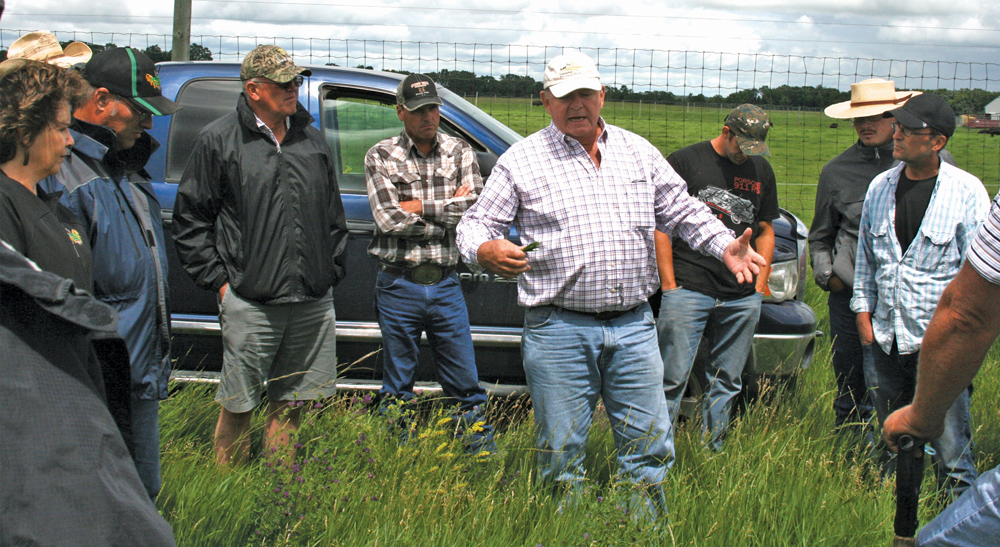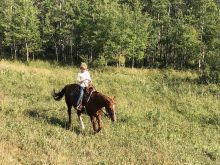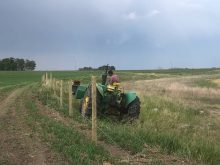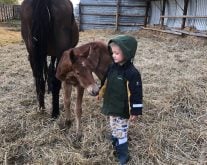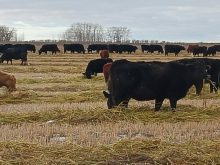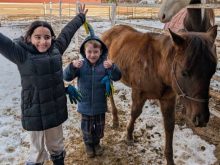No matter where he speaks in the world, Ian Mitchell-Innes carries a message to beef producers about achieving optimal animal performance, reducing costs, and ultimately becoming more profitable.
Animals instinctively know where they can get the highest level of energy — from the top third of the plant, Mitchell-Innes, a South African rancher, told producers at a 2016 grazing workshop at Lenore, Man.
“If left to select, cattle will always eat the high-energy top third of growth first, and will only graze the plant further when left too long on the pasture,” says Mitchell-Innes.
Read Also
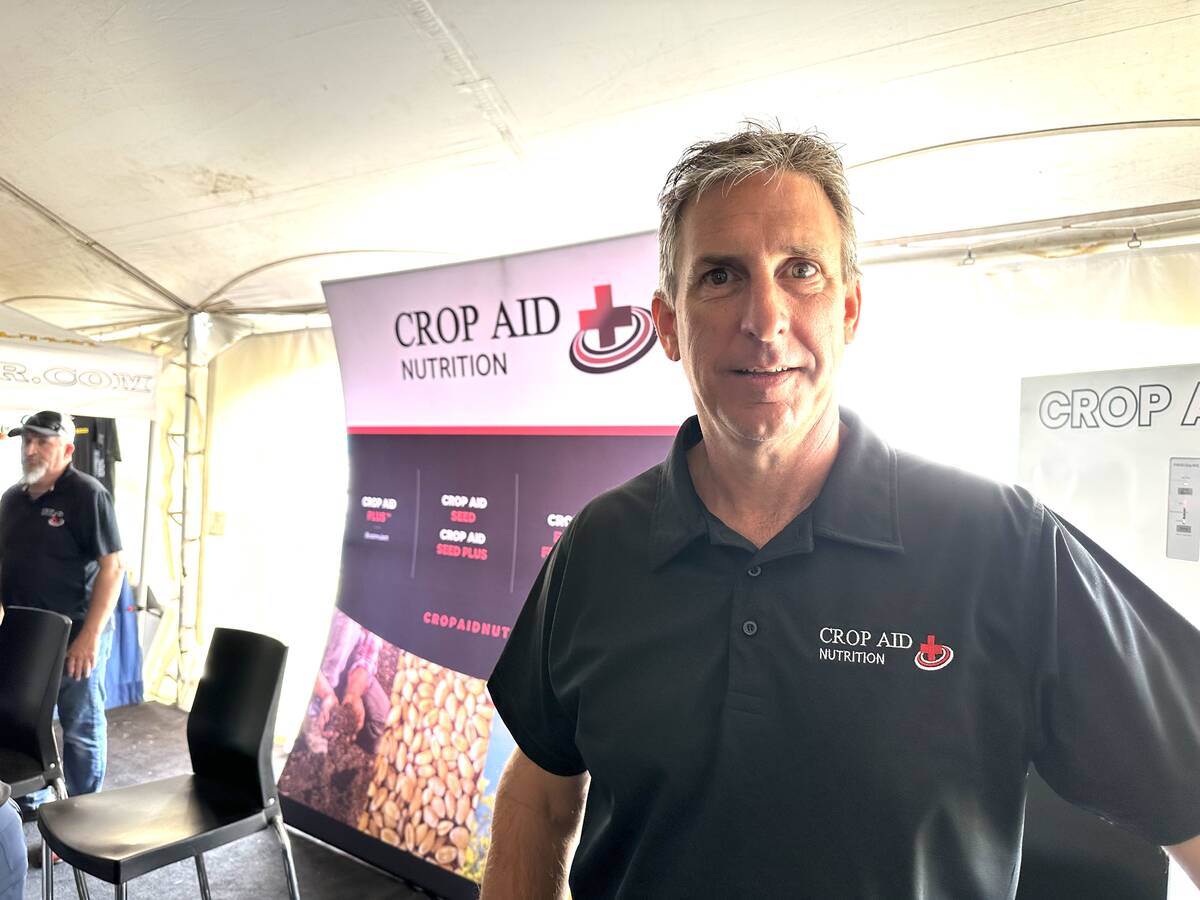
New soil treatment targets saline patches in fields
Crop Aid SS is a Saskatchewan-made spray that’s intended to help farmers manage saline soils by leaching salts away from the root zone.
“It’s selective grazing. If we can manipulate that grazing, and manage the timing and stock density, we can ensure the animals receive the highest-energy feed, gain the most weight and make us enough money to do what we want to do.”
Linking energy and money
Optimizing beef production and profitability is a combination of timing, stock density and grazing management, he says.
“Energy is money, money is energy, time is money and water is money. They are all interrelated. Animal performance is the money part of the equation and energy is the elusive part of the equation that you need to achieve animal performance. We need to maximize the amount of energy we capture from the sun and we do that by putting carbon into the soil to create natural fertility by stimulating the soil biology.”
Mitchell-Innes says that when carbon (plant material) is trampled into the soil, it feeds the soil microbes and improves soil quality and health. The more plant material left behind after grazing, the quicker the soil regenerates.
Mitchell-Innes says livestock need to be managed to make sure the ground is covered at all times with either a diversity of growing plants or trampled vegetation. This keeps the soil temperature more constant, helps retain moisture and continuously feeds soil life.
He advocates a high stock density on smaller paddocks, with short grazing periods, frequent moves and long recovery periods to allow grass to regrow.
“These are the key ingredients in a grazing plan that will provide higher forage productivity and animal performance,” says Mitchell-Innes. “The bigger the herd, the better animals do and the quicker the soil is restored.”
In fact, he warns that once producers adopt a system like his, they’ll be riding a “bucking horse” because it will work so well they will find themselves with more grass than their animals can use. That means producers will have to decide between buying more cows, or slowing the process down until they grow their herds naturally.
Mitchell-Innes has been practicing holistic management for 17 years on his ranch in South Africa, and travels the world teaching about high stock density grazing and soil health. About 50 producers from across Manitoba attended the three-day workshop, organized through the Manitoba Grazing Clubs, with funding provided by Ducks Unlimited Canada.
Putting grazing theories into practice
The second workshop day included a pasture tour looking at some of Mitchell-Innes’ theories in practice on the farm of Robin Taylor near Oak Lake. Taylor has been working to rejuvenate some pastures which were grazed conventionally for many years.
“Our previous management program was slowly degrading our soil and depleting our grass supply,” says Taylor. “My goal is to rebuild the soil to generate healthier grass that can extend our grazing season and shorten our winter feeding program.”
Producers compared two sites in the same field; the first was grazed rotationally and bale grazed in the winter, and the second was grazed conventionally.
At the first site there was good growth, more plant diversity and hardly any bare soil visible.
“What grows on the soil is a mirror image of what is in the soil,” said Mitchell-Innes. “And what is in the soil will change what’s on the soil.”
Taylor’s biggest challenge in adopting this new management system was accepting that trampled, excess grass is not wasted grass.
“Plus, hay bales that are not totally cleaned up is not wasted feed,” says Taylor. “There has to be something left to feed the soil.”
Comparing soil
Soil at the second site was lighter in colour, indicating less carbon content. Cow dung on the surface was not being broken down because of a lack of soil life. Taylor says he hopes to either roll out hay bales on the site to cover the ground and stimulate the microbes to begin working, or he may try an ‘inclusion zone.’ This is where a large number of animals is confined in a very small, narrow strip for a short time — maybe an hour or two — to maximize the trampling effect and supercharge the system.
Taylor is only one season into his new management system, but already he has seen benefits. “We started in April (2016) and already we have lengthened our grazing period by two months and shortened our winter program,” he says. “We have less hay to bale because the cows will graze stockpiled grass in the winter. We are also seeing fewer flies and parasite problems, and less stress for the cows and us. The benefits are exceptionally fat cattle, with fresh grass every day.”
Mitchell-Innes says the key to making it work is sequestrating carbon and putting carbon into the soil.
“It all relates back to what you want to do. The quality of life you want, the production you want, and what you want the future resource to look like. If you use non-selective grazing you will need to put money in to get animal performance. With a selective grazing system you may have to supplement it to start with, but over time when you have carbon in the soil you will have plenty of energy and be able to make a good living without spending money.”


